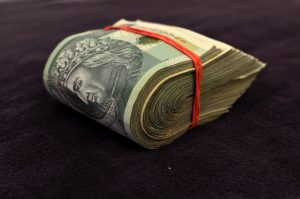Forex trading, also known as foreign exchange trading, is the buying and selling of currencies in the global market. It has become a popular investment option for many traders due to its high liquidity, accessibility, and potential for profit. In this article, we will delve into the workings of Forex trading and explore how it operates.
The Forex market is the largest financial market in the world, with an average daily trading volume of over $5.3 trillion. It is a decentralized market, meaning that there is no central exchange or clearinghouse. Instead, trading is conducted electronically over-the-counter (OTC) through a network of banks, financial institutions, and individual traders.
The Forex market operates 24 hours a day, five days a week, and is accessible from anywhere in the world. This accessibility is due to the fact that the market is open in different time zones, allowing traders to trade at any time of the day or night. The market is divided into three main trading sessions: Asian, European, and American. Each session has its own unique characteristics and trading opportunities.
Forex trading involves buying one currency and selling another currency at the same time. The exchange rate between two currencies is determined by the supply and demand for those currencies. For example, if there is high demand for the US dollar and low supply of the Japanese yen, the exchange rate between the USD/JPY pair will increase. Traders can make a profit by buying a currency when it is undervalued and selling it when it is overvalued. This is known as going long or short.
The Forex market is highly volatile and can be affected by a variety of factors such as political events, economic indicators, and market sentiment. Traders use various tools and strategies to analyze the market and make informed trading decisions. Technical analysis involves using charts and indicators to identify patterns and trends in the market. Fundamental analysis involves analyzing economic and political factors that may affect the value of a currency.
Forex trading involves leverage, which allows traders to control a larger position with a smaller amount of capital. For example, if a trader has a leverage of 1:100, they can control a position worth $100,000 with only $1,000 of capital. Leverage can increase potential profits, but it also increases the risk of losses. Traders should use caution when using leverage and have a solid risk management strategy in place.
The Forex market offers a wide range of trading instruments, including major currency pairs, minor currency pairs, and exotic currency pairs. Major currency pairs include the USD/EUR, USD/JPY, and USD/GBP. Minor currency pairs include the EUR/GBP and the AUD/CAD. Exotic currency pairs include currencies from emerging market economies such as the USD/MXN and the USD/ZAR.
In addition to currency pairs, the Forex market also offers other trading instruments such as commodities, indices, and cryptocurrencies. Commodities include metals such as gold and silver, energy products such as oil and gas, and agricultural products such as wheat and soybeans. Indices represent a basket of stocks from a particular market or sector, such as the S&P 500 and the Nasdaq. Cryptocurrencies are digital currencies such as Bitcoin and Ethereum.
In conclusion, Forex trading is a complex and dynamic market that offers a range of trading opportunities for traders of all levels. It is a highly liquid market that operates 24/5 and is accessible from anywhere in the world. Traders use various tools and strategies to analyze the market and make informed trading decisions. The market is highly volatile and can be affected by a variety of factors such as political events, economic indicators, and market sentiment. Leverage allows traders to control a larger position with a smaller amount of capital, but it also increases the risk of losses. Traders should use caution when using leverage and have a solid risk management strategy in place.





